Reflex Sight: Past, Present, and Future
At RECOIL, we review every product fairly and without bias. Making a purchase through one of our links may earn us a small commission, and helps support independent gun reviews. Read our affiliate policy.
Find out more about how we test products.
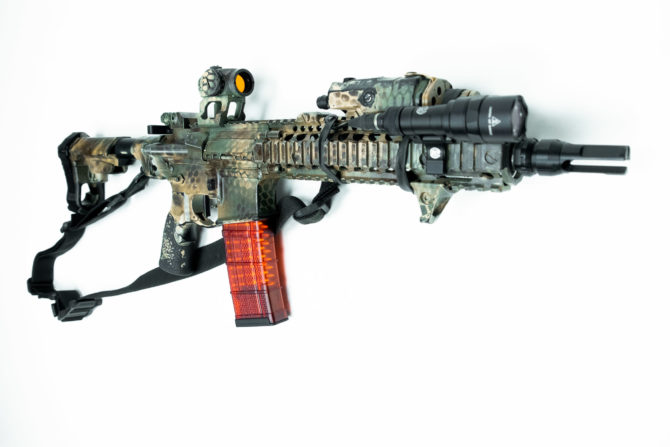
In 2020, the term Reflex Sight sounds a little out of date. There's something of a late-80's to Operation Desert Storm alure hovering about the old name. Often now referred to as a Red Dot Sight, the current nomenclature of the tactically proficient inundate themselves with words like Optic, or obscure the subject with codewords like “glass.” Growing up in tandem with the internet, many remember the day they graduated from the brain-melting phase of arguing AR vs AK, through the troublesome years of 9mm vs .45 into the sure sign of adulthood: the classic Red Dot vs Holographic arguments of the early 2010's. In those days one was forced into what could only be understood as a binary decision: do you favor the indestructibility of the Aimpoint M68 CCO, or that big-as-a-Navy-SEAL's-ego field-of-view unique at that time to the EOTECH Holo sight?
History of the Reflex Sight
Before we dig into the characteristics, qualities, and varieties of reflex sights, a little bit of history must come first. As time passes, the integration of digital technology into projectile weapons only continues to increase, and one should expect it to continue. While Red Dot Sights are still being accepted and integrated into handguns, it didn't take long for Iron Sights to become a secondary option to an aiming device not designed for ranged magnification. The spiritual ancestor to what is now the norm for close range combat and defense carbines came about through the use of tritium and a curious understanding of the human brain.
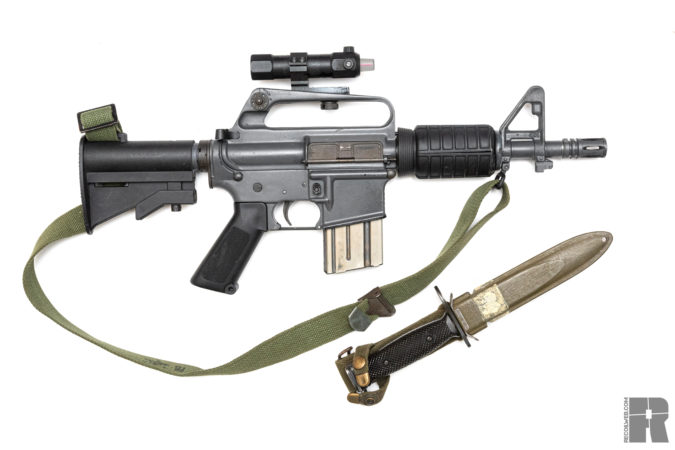
The OEG, or Occluded Eye Gunsight emerged around the Vietnam war and gained recognition during the Son Tay prison raid. Unlike the conventional U.S. Armed forces of the day, the soldiers in the Special Operations could be found sporting what looked like a scope with a small red object protruding out where the objective lens would sit. However, if one looked into the OEG like a rifle scope, all they would see would be a red dot in a field of black. The OEG required the shooter to keep both eyes open, manifesting a phenomenon called collimating where one eye would see the dot the target, the other eye the dot, and the brain would superimpose the two images together. This same concept when applied to the ACOG and other prismatic optics is called the Bindon Aiming Concept.
But by 1975, Aimpoint had launched their electronic Reflex Sight by bringing battery-illuminated lighting to a bloodline of engineering dating back to 1902. By reflecting a point of light off of a layer of glass, the term “reflex sight” was born. The name stuck, however, largely due to the way it was perceived to grant lightning reflexes to the shooter.
Function and Operation
The Reflex Sight plays fewer tricks on your mind than its predecessors, but holds onto the genetic development all the same. While the OEG didn't reflect light toward the eye of the shooter, a reflex sight uses a light-emitting diode to project a small point onto a sheet of curved glass which corresponds to the desired point of impact of the shooter. This glass has a special coating that allows most frequencies of light to pass through but reflects red light back to the shooter. The wider the frequency of reflected light, the more discolored the lens will appear.
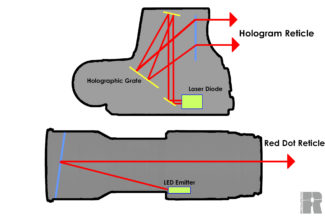
While a reflex sight uses a simple LED to reflect light off a mirror to create a reticle, a holographic sight uses lasers to render a floating 3D reticle.
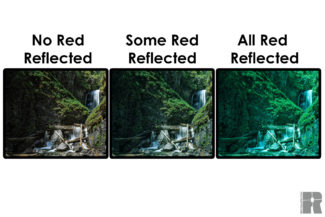
The visible tint in reflex sights comes from the reflective coating that directs the red light back toward the shooter's eye. Early development required a balancing act between the brightness of the dot and the amount of color distortion through the optic.
The simplicity of a single-reference point of aim as opposed to lining up a front and rear sight allows not only for easing strain on the eyes transitioning through focal planes, but also reduces the dependency of the shooter to have perfect form. The angle of the reflection functionally affords the shooter grace when aiming, for so long as the optic was zeroed, the shooter can move their head shifting the apparent location of the dot in the optic, with minimal effect on their point of impact. There is debate, however, about how much this affects the placement of the shot, if at all.
Short comment on Parallax:
Parallax is the apparent displacement of an object when viewed from two different angles. A simple example we've all experienced is a speedometer in a car: viewing a speedometer from the driver's seat will give you the correct reading, whereas when it's seen from the passenger seat it will be wrong.
The same applies to optics, regardless of marketing claims of “parallax free”. The only time a scope or red dot will not have parallax error is if the eye is perfectly centered behind the reticle, or if the reticle is focused exactly on the targeted distance. Parallax error is largely unnoticeable at magnifications under 10x, which is why you'll have a parallax adjustment knob on any quality scope above that magnification level.
The reflex sight developed along three main paths from there: ruggedness, size, and field of view. The rugged genome gave birth to the Aimpoint T-1 Micro, and was followed by a whole list of contenders as time passed on. Micro red dot sights (MRDS) eventually could fit on a pistol and now have surpassed trending and quickly are becoming the new normal. Contending with the EOTECH for field of view are options like the Trijicon MRO that feature a design attempting to minimize how much the body of the sight blocks the shooter's view.
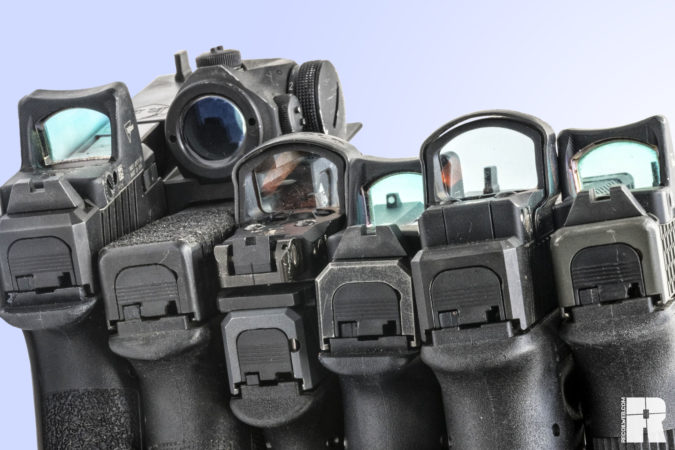
The name Red Dot Sight should not be deceiving, however. Young soldiers are probably still spreading the idea that the infamous “they” chose red because of how easy the eye picks up the dot. We're not here to comment on that at the moment, but those for those who play Call of Duty or have some colorblindness, not every reflex sight comes exclusively in Red, and with new models arriving each year, a greater variety of reticles are appearing on the market.
Even as the technology behind optics and sights continues to explore new directions, the qualities typically found in reflex sights gives them a certain dominance in the field. Most options boast nearly excessive battery life, often marketed in the years. In trunks, closets, and gun safes across the country a T-1 Micro can be found with the light on, left that way on purpose with the confidence that the car's battery will likely need changing first.
Few alternatives can beat a Reflex Sight in weight and durability. At the same time, Low Power Variable Optics (LPVO's) are beginning to creep in with generous fields of view, all the while offering magnification at the turn of a dial. Holographic sights still pose a threat to the hegemony of red dots by creeping down in price with the Vortex UH-1.
The State of Reflex Sights in 2021
There's nothing like having choices, but in 2020, we're no longer gambling with cheap knock-offs with so many legitimate contenders on the field. Remember the three main paths from earlier? In similar fashion, the three categories of reflector-type red dot sights presented are full-size prioritizing field of view, the rugged compact optics typically featuring a 20mm aperture, and the self-defined micro section popular on pistols.
Full-Size / Field of View
From the battlefield to a boar hunt, the heart and soul of reflex sights rests in the hands of these options. Old enough to be found on retro clone builds, relics like the Aimpoint M68 CCO still garner respect, and with years of use before options like the EOTECH reached the military, the design had gone through evolutions of improvement. Spiritual successors such as the AIMPOINT PRO and Vortex SPARC have survived house fires, which is more than most of us will go through, hopefully.
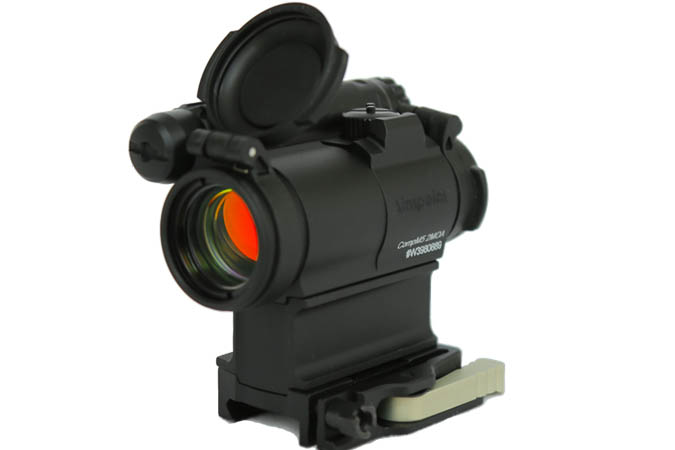
Even as some evolutions sought to get smaller, the desire for full-size reflex sights remains prominent as multiple companies continue to offer reputable and dependable red dot optics with aperture hovering around that 30 mm mark.
More on Full Size Reflex Sights
- This Aimpoint PRO survived a House Fire.
- Another full-cruelty demonstration of the failing to kill a Vortex Sparc.
Rugged / Compact
Perhaps it was timing, perhaps by design, when the Aimpoint T-1 Micro hit the scene in 2007, it brought with it the YouTube torture test. Millions watched in horror and anticipation as the Reflex Sight was dropped, smashed, thrown across concrete parking lots, submerged in water, and the like, only to be returned to the rifle with minimal shift in point of impact. Number crunchers claimed a 5-year battery life and quickly the optic was spotted on carbines, pistols, and shotguns. The category-defining durability spawned a host of options, with features like solar panels, reticle choices, and a steady creep towards more and more affordable options.
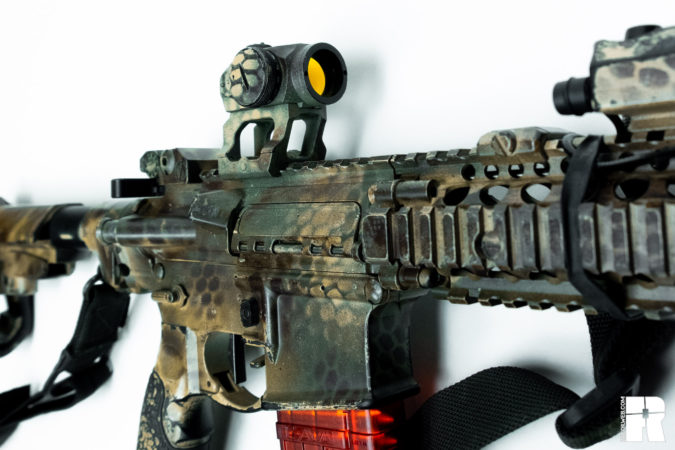
The trend had caught on, and rightly deserved a place in the pantheon of excellent red dot designs. Even as Aimpoint's T-1 and T-2 Micro continue to hold a venerable place as the category progenitor, new offshoots have arrived offered with a range of dot colors, reticles, and features like solar panels to extend battery life can be found on SIG ROMEO4T and various models by HOLOSUN. In 2020, those interested in topping a defense carbine should not overlook the whole list of contenders including the STRIIKER by Atibal, Liberator by Swampfox, SPARC AR or Crossfire by VORTEX, and the TSR by U.S. Optics, just to name a few. There was a day when the naysayers could say nay, but today is not that day.
At the periphery of the compact/rugged category one will find the Trijicon MRO with a 25mm objective lens designed to provide a greater field of view. Read more here.
MICRO
Distinctly miniature, Micro Red Dots were not the first ones to make it on a pistol, but their popularity as a handgun optic has multiple histories. In 1970, Jerry Barnhart Before the days of sending a pistol off to get an optic cut, the most common place to find a micro reflex sight would be on a military or competition rifle mounted in tandem with some form of magnified glass. For a time, the combination of a Trijicon ACOG accompanied with an RMR caught the envy of those outside special military units, and for those interested in 3 gun, choosing to mount a second optic on your rifle will secure you a place in the high speed and punishing open devision.
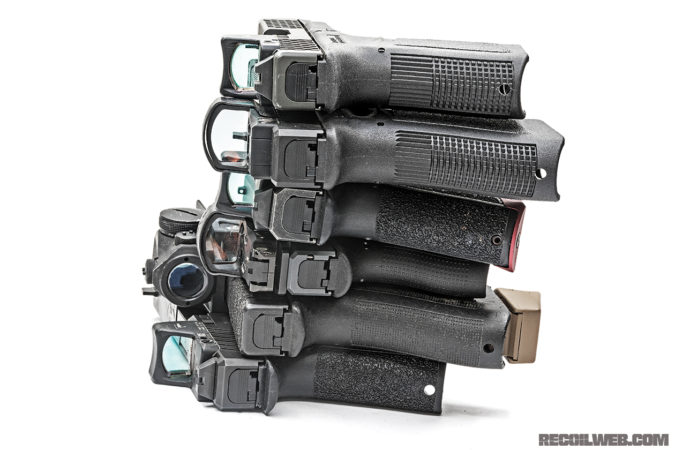
In order to achieve their size, most Micro Reflex Sights feature an exposed emitter, sacrificing durability for reduced weight and size. Subject to the elements, MRDS's require regular cleaning and maintenance, and both water and debris threaten to put them out of commission.
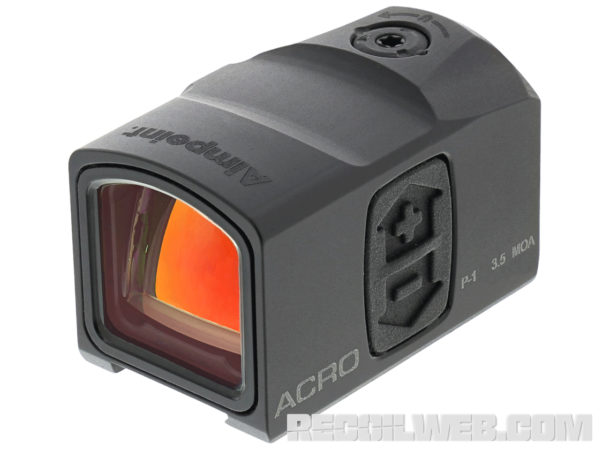
The Aimpoint ACRO and Holosun HE509T-RD were both designed as a sealed system, with the intent of topping common handguns. When sorting through the many options of micro reflex sights, one must pay special attention to the footprint: the pattern of bottom face of the optic that attaches to either a pistol slide or mount for use on long guns. Some share footprints, but that's dicy business and often a point of friction between competing manufacturers.
More on Pistol Mounted Micro Red Dot Sights:
- Learn how to Master Red Dot Equipped Pistols with Mike Pannone.
- For more on the history of red dots on handguns, as well as what to do when they break, read here from Concealment 9.
- For techniques on transitioning from irons to an MRDS, read more.
Holographic Sights
In 2020, no one should be faulted for mistaking an EOTech XPS series or Vortex UH-1 as a reflex sight. The distinction between a holo sight and more traditional reflex optics is found in how they go about getting a reticle to appear for the shooter. From the outside, they look and act similar, but holographic sights bring their own characteristics to the table. Though shorter battery life and wider field of view are typical of the category, that's not all we'll have to say on them. Keep current and we'll let you know when there's more content on holographic sights.
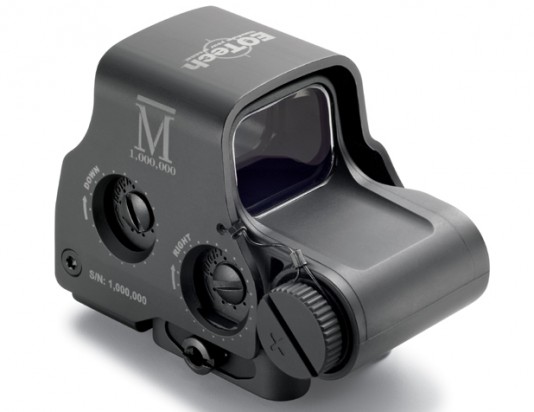
Closing Off
Having come so far, we expect the future of the reflex sight to develop in two directions: either a constant pursuit of making them smaller, lighter, and less occluding of the shooter's vision, or ultimately relinquishing ties to their old name by giving up the dependency on reflecting light off glass all together. We're not sure how this second option will manifest, but if it's anything like the video games, we'd be more than interested.
For now, reflex sights continue to dominate the trend and market of close-range, quick-draw inspiring aiming devices, at least in daylight hours. Tying them into night vision operations is still a work in progress, as a red-dot mounted pistol feel like cheating they're so easy, while the experience is opposite when trying to line up an NVG tube with a sight sitting atop a carbine. Most, in that case, opt to use IR lasers to accommodate night vision dependent military operations.
Finally, the ecosystem of available reflex sights can quick spark more than one heated debate over which is “best.” That argument, thankfully, is waning as the level of quality found across the industry continues to rise. There was a time when one ventured onto dubious ground when looking at anything other than the higher-priced names typically known to secure government contracts, but those days are passing quickly by as more and more manufacturers continue offer reliable quality optics backed up by honest warranties. Owning a dependable reflex sight need not come at a luxury cost.
More on Optics
- LPVO vs Magnifier, Pick your Poison.
- Red Dot Sight Buyer's Guide.
- Many of the Best 9mm Pistols for 2020 come optics-ready.
- EOTech Magnifier: Force Multipliers.
- The Holographic Sight Advantage of EOTech.
- Vortex Red Dot Sight Guide.
- Aimpoint Acro vs Holosun 509T: Battle of Sealed MRDS Optics.
- Prism Scope Versatility: The Battlefield and Beyond.
Why you can trust RECOIL
Since our founding in 2012, RECOIL remains the premier firearms lifestyle publication for the modern shooting enthusiast. We deliver cutting-edge coverage of guns, gear, accessories and technology. We go beyond basic reviews, providing no B.S. buyer’s guides, hands-on testing and expert analysis on everything from firearms and survival equipment to watches and vehicles.
Our reviewers are the backbone of our operation and come from diverse shooting backgrounds: Former law enforcement, military veterans, competitive shooters, seasoned hunters and plain old firearms enthusiasts. Furthermore, we’re not just gun experts, but dedicated journalists who adhere to the strictest standards of our profession.
At RECOIL, editorial independence is the foundation of everything we publish and the cornerstone of reader trust. Our editors, writers and content creators make all editorial decisions independently, free from outside influence. That boils down to: advertisers don’t dictate our coverage, the outcomes of our reviews or what we recommend in our buyer’s guides. First and always, our commitment is to our audience—ensuring every review and article is accurate, unbiased, and driven by real-world experience.
Whether you’re selecting your next firearm, upgrading your gear, or exploring the latest innovations in the shooting world, RECOIL provides the trusted insights you need to make informed decisions. Learn more about our Editorial Standards and how we review products.
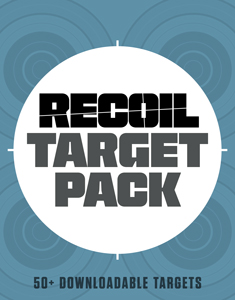
NEXT STEP: Download Your Free Target Pack from RECOIL
For years, RECOIL magazine has treated its readers to a full-size (sometimes full color!) shooting target tucked into each big issue. Now we've compiled over 50 of our most popular targets into this one digital PDF download. From handgun drills to AR-15 practice, these 50+ targets have you covered. Print off as many as you like (ammo not included).Get your pack of 50 Print-at-Home targets when you subscribe to the RECOIL email newsletter. We'll send you weekly updates on guns, gear, industry news, and special offers from leading manufacturers - your guide to the firearms lifestyle.
You want this. Trust Us.

